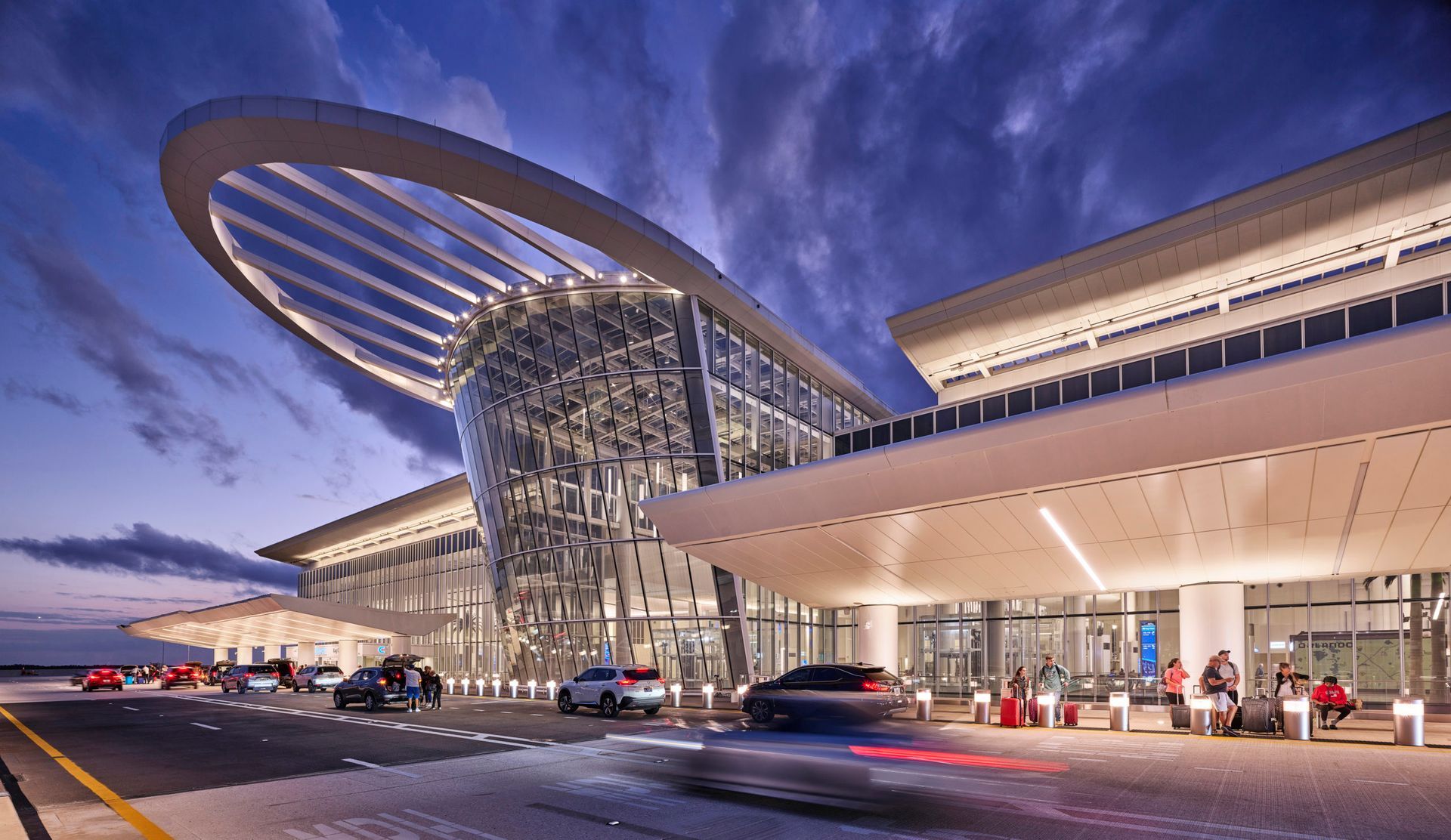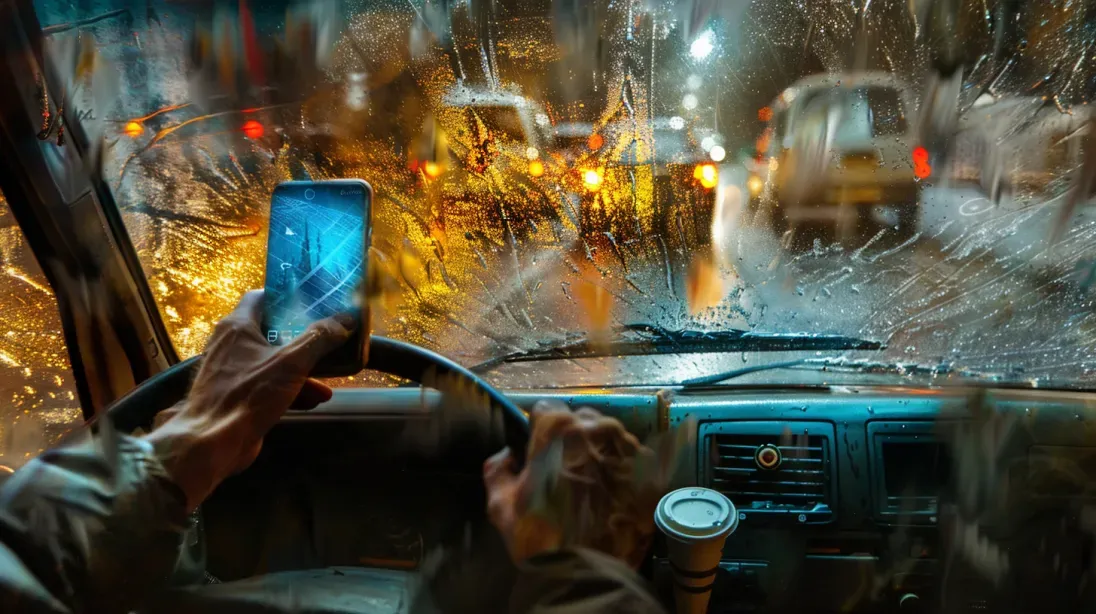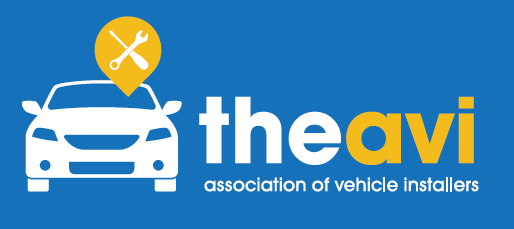01283 533330
Direct Vision Standard 2024: Safety Permit Guide
HGV Safety Permit Guide

The Direct Vision Standard (DVS) is a crucial initiative aimed at improving road safety in Greater London, particularly concerning heavy goods vehicles (HGVs). As we approach the implementation date of October 2024, understanding the DVS and its requirements is essential for all HGV operators. This guide will provide comprehensive insights into the DVS, the necessary safety permits, application processes, and compliance regulations, ensuring your operations remain safe and legal within London.
What is the Direct Vision Standard (DVS) and Why is it Important?
Understanding the DVS and Its Purpose
The Direct Vision Standard (DVS) initiative was introduced by Transport for London (TFL) to enhance road safety by ensuring that HGVs are designed and operated with direct visibility in mind. The purpose of the DVS is to minimise blind spots around large vehicles, particularly the nearside, where accidents involving pedestrians and cyclists are most likely to occur. By enforcing this standard, TFL aims to create a safer urban environment and work towards achieving London’s Vision Zero plan, which seeks to eliminate all fatalities and serious injuries on the roads.
The DVS addresses immediate safety concerns and fosters a culture of accountability among HGV operators, compelling them to prioritise vehicle safety and improve their operational practices to comply with the DVS requirements.
Moreover, the DVS emphasises the importance of visibility in preventing accidents, encouraging operators to invest in vehicles that offer improved sightlines. The standard's implementation reflects a broader commitment to a safer London, where vulnerable road users and commercial drivers coexist harmoniously. The DVS serves as a reminder that proactive measures, such as ensuring that HGVs have appropriate safety features and that drivers are trained to operate them safely, can significantly reduce the risk of incidents on the road.
By understanding and adhering to the DVS, operators can contribute to a safer community while also complying with regulatory requirements that are increasingly stringent in this urban landscape.
Impact of DVS on HGV Operators
Introducing the Direct Vision Standard has far-reaching implications for HGV operators, particularly those operating in Greater London. One of the most significant impacts is the requirement for HGVs to obtain a safety permit, known as the HGV Safety Permit. This permit is essential for any vehicle weighing over 12 tonnes that intends to operate within London. As a result, operators must assess their fleet to determine whether their vehicles comply with the DVS specifications, particularly regarding visibility and safety measures. Failure to comply with the DVS could lead to substantial penalties, including penalty charge notices, which can financially burden businesses.
Additionally, operators are encouraged to invest in vehicles rated according to the DVS star rating system. Vehicles with a higher star rating are recognised as safer and more compliant with the DVS requirements. This shift not only enhances the safety of road users but also positions compliant operators favourably in a competitive market. Furthermore, the DVS has prompted a greater emphasis on training for drivers, ensuring they are well-versed in the importance of visibility and safety practices when operating HGVs. Overall, the DVS drives a transformation in the industry, fostering a culture of safety and compliance that benefits businesses and the public.
Connection Between DVS and London’s Vision Zero Plan
The Direct Vision Standard is intricately linked to London’s Vision Zero plan, which aims to eradicate fatalities and serious injuries on the city’s roads. This plan acknowledges the unique dangers that HGVs present, especially for vulnerable road users such as pedestrians and cyclists. By implementing the DVS, TFL is taking a significant step toward achieving the goals of the Vision Zero initiative. The DVS focuses on enhancing vehicle design to improve visibility, thus addressing one of the primary causes of accidents involving HGVs.
Moreover, the DVS encourages HGV operators to adopt a progressive, safe system that aligns with Vision Zero's objectives. This system includes measures such as equipping vehicles with safety technology, such as moving off information systems that alert drivers to potential hazards before they manoeuvre. The connection between the DVS and Vision Zero highlights the importance of a comprehensive approach to road safety, where technological advancements and operator education complement regulatory measures.
By fostering a collaborative environment between TFL, operators, and the wider community, London aims to create a safer urban landscape for all road users.
Who Needs an HGV Safety Permit to Operate in Greater London?
Requirements for HGV Operators
All HGV operators intending to operate in Greater London must be aware of the requirements for obtaining an HGV Safety Permit. The permit is mandatory for vehicles that weigh over 12 tonnes and are registered to operate within this jurisdiction. To apply for a permit, operators must ensure that their vehicles meet the Direct Vision Standard requirements, which involves having a minimum star rating determined by the vehicle's design and visibility features. Operators are encouraged to assess their fleet to identify any vehicles that do not comply with the DVS, as these will need modifications or replacements to qualify for a permit.
Furthermore, operators must ensure that all drivers are trained in the importance of safety measures and understand the implications of operating non-compliant vehicles. The HGV Safety Permit scheme is designed to enhance accountability among operators, ensuring that they take responsibility for the safety of their vehicles and the potential risks they pose to other road users. By adhering to these requirements, operators can avoid penalties and contribute to a safer driving environment in London. Compliance with the DVS is not just a legal obligation; it enhances the overall reputation and credibility of HGV operators in the eyes of clients and the public.
Read this article from Transport For London (TFL)
Vehicles Affected by the DVS
The Direct Vision Standard affects a range of vehicles operating in Greater London, specifically targeting heavy goods vehicles (HGVs) over 12 tonnes. This includes various trucks, lorries, and other heavy vehicles commonly used commercially. All HGVs within this weight category must comply with the DVS, regardless of their specific use or operational context. Operators must assess their fleet to identify which vehicles require an HGV Safety Permit and ensure that those vehicles meet the necessary DVS requirements.
In addition to weight, the DVS also considers vehicles' design and visibility features. HGVs that do not meet the minimum star rating are subject to strict regulations and may face penalties if they operate in London without the required safety permit. This comprehensive approach aims to minimise blind spots and improve overall road safety for vulnerable road users. Operators must remain vigilant in monitoring their vehicles' compliance with the DVS to avoid potential penalties and safeguard the well-being of all road users within the Greater London area. Understanding which vehicles are affected by the DVS is crucial for ensuring compliance and maintaining operational legitimacy in this urban landscape.
Understanding the Minimum DVS Star Rating
The Direct Vision Standard employs a star rating system to assess the visibility and safety of HGVs operating in London. The minimum star rating required for compliance is a critical aspect of the DVS, as it determines whether an HGV can operate in Greater London without facing penalties. Vehicles are rated from zero to five stars based on their design and visibility features, with higher ratings indicating better visibility for drivers and reduced blind spots. HGVs must achieve at least a one-star rating to operate legally in London, but operators are encouraged to aim for higher ratings to enhance safety and avoid penalties.
Understanding the minimum DVS star rating is essential for operators looking to comply with the DVS requirements. Vehicles that do not meet the minimum rating will not be eligible for the HGV Safety Permit and, therefore, cannot legally operate in London. This system encourages operators to invest in safer vehicles and implement necessary modifications to improve visibility. The star rating not only influences compliance but also impacts public perception and trust in HGV operations. Operators with higher-rated vehicles will likely enjoy a competitive advantage as clients increasingly prioritise safety and compliance in their logistics partners.
How to Apply for a DVS Permit?
Step-by-Step Guide to the Application Process
Applying for a Direct Vision Standard (DVS) permit involves a systematic approach to ensure compliance with the requirements set by Transport for London (TFL). The first step is to assess whether your HGVs comply with the DVS, focusing on their star ratings and visibility features. Once you confirm that your vehicles meet the necessary criteria, you can begin the application process by visiting the official TFL website, where you will find the DVS permit application portal. Completing the online application form requires you to provide essential information about your vehicles and your business, including registration details and safety measures in place.
After submitting your application, TFL will review the information provided to verify compliance with the DVS requirements. This process may take some time, so it’s essential to apply well in advance of the intended operation date. Once your application is approved, you will receive the HGV Safety Permit, allowing you to operate legally within Greater London. However, updating your permit and reporting any changes to your vehicle or operations is crucial. By following these steps diligently, operators can navigate the application process smoothly and remain compliant with the DVS regulations.
Documents Required for DVS Permit Application
When applying for a Direct Vision Standard (DVS) permit, HGV operators must prepare essential documents to facilitate the application process. Firstly, proof of vehicle registration is required, confirming that the HGVs intended for operation in Greater London are officially registered and compliant with local regulations. Additionally, operators must provide details about the vehicle's star rating, which can be obtained from the manufacturer or through an independent assessment. This documentation is crucial in demonstrating that the vehicles meet the minimum safety standards outlined by the DVS.
Furthermore, operators should include information regarding safety measures implemented on the vehicles, such as visibility enhancements and any additional safety technology. This may involve providing evidence of driver training programs focusing on safe operation practices. Ensuring that all required documents are accurate and complete will streamline the application process and reduce the likelihood of delays or rejections. By preparing these documents in advance, operators can facilitate a smoother transition into compliance with the DVS and avoid potential penalties for operating without an HGV Safety Permit.
Common Mistakes to Avoid When Applying
When applying for a Direct Vision Standard (DVS) permit, HGV operators must be aware of common pitfalls that can lead to application delays or rejections. One frequent mistake is failing to accurately assess the star rating of their vehicles before applying. Ensuring that the vehicles meet the minimum DVS requirements is crucial, as operating non-compliant HGVs can result in significant penalties. Operators should take the time to verify their vehicles' ratings and make any necessary modifications to enhance visibility and safety features.
Another common error involves submitting incomplete documentation. Operators must ensure that all required documents, such as vehicle registration proof and details of safety measures, are included in the application. Omitting critical information can prolong the review process or lead to outright rejection. Additionally, operators should avoid waiting until the last minute to apply for the DVS permit, as processing times can vary. Applying well in advance allows for any unforeseen issues to be addressed promptly, ensuring operators can comply with the DVS requirements without disrupting their business operations.
What are the DVS Requirements and Changes in 2024?
Overview of DVS Requirements for Compliance
The Direct Vision Standard (DVS) sets forth specific requirements that HGV operators must comply with to operate legally in Greater London. These requirements focus primarily on vehicle design, visibility, and safety features, aiming to minimise blind spots and enhance road safety for all users. To be DVS compliant, HGVs must achieve a minimum star rating based on their visibility capabilities, with vehicles rated from zero to five stars. Operators must ensure their fleet includes vehicles that meet or exceed the minimum star rating to qualify for the HGV Safety Permit.
Moreover, the DVS compliance requirements extend beyond vehicle design to include driver training and operational protocols. HGV operators are encouraged to implement a progressive, safe system, which includes equipping vehicles with safety technology and ensuring drivers are well-trained in safe operation practices. Compliance with these regulations is essential, as non-compliance can lead to penalties, including hefty penalty charge notices. By adhering to the DVS requirements, operators improve safety and enhance their reputation and reliability within the logistics industry.
Upcoming Changes Effective from October 2024
In October 2024, significant changes to the Direct Vision Standard (DVS) will come into effect, impacting HGV operators throughout Greater London. One of the most notable changes is the introduction of stricter compliance requirements, including an increased focus on vehicle visibility and safety features. As part of these changes, the minimum star rating for HGVs may be raised, requiring operators to ensure their vehicles meet the updated standards. This shift is designed to enhance safety measures for vulnerable road users, aligning with London’s Vision Zero plan to eliminate serious road injuries and fatalities.
Additionally, operators should be prepared for increased scrutiny during the permit application process. Transport for London (TFL) will likely implement more rigorous evaluations of applications to ensure that all vehicles comply with the updated DVS requirements. This means that operators must be proactive in assessing their fleet and making any necessary modifications to meet the new standards. By staying informed about these changes and preparing accordingly, HGV operators can avoid disruptions to their operations and continue to contribute to a safer London.
Importance of Staying Updated with DVS Regulations
Staying updated with the Direct Vision Standard (DVS) regulations is essential for HGV operators who wish to continue operating legally and safely in Greater London. The landscape of transportation regulation is constantly evolving, and changes to the DVS can significantly impact compliance requirements. Operators who neglect to stay informed may find themselves facing unexpected penalties or operational challenges. Regularly reviewing regulatory updates from Transport for London (TFL) and industry resources is crucial to ensuring that all vehicles and practices align with current standards.
Moreover, staying abreast of DVS changes allows operators to enhance their vehicles and safety systems proactively. By understanding upcoming amendments and compliance requirements, they can make informed decisions about fleet management and investments in safety technology. This ensures compliance and positions businesses favourably in a competitive marketplace focused on safety and responsibility. Ultimately, being proactive about DVS regulations is not just a matter of compliance; it reflects a commitment to the welfare of road users and the broader community in which operators operate.
What is the DVS Star Rating System?
How the Star Rating System Works
The DVS star rating system is a crucial component of the Direct Vision Standard, designed to assess the visibility and safety of HGVs operating in Greater London. This system rates vehicles on a scale from zero to five stars, with higher ratings indicating better visibility for drivers and reduced blind spots. The star rating is determined by evaluating various factors, including the vehicle’s design, positioning of mirrors, and overall visibility from the driver's seat. HGVs must achieve a minimum star rating to operate legally in London, which serves as a benchmark for compliance with the DVS.
Understanding how the star rating system works is essential for HGV operators aiming to meet DVS requirements. Vehicles rated at one star or higher are eligible for the HGV Safety Permit, allowing them to operate within Greater London. However, operators are encouraged to strive for higher ratings, as vehicles with three stars or more are recognised as significantly safer and more compliant with the DVS. The star rating system not only helps operators assess their fleet's visibility capabilities but also serves as a valuable marketing tool, showcasing a commitment to safety and compliance in an increasingly competitive industry.
Benefits of Achieving a Higher DVS Rating
Achieving a higher DVS star rating offers numerous benefits for HGV operators, particularly those operating in Greater London. One of the most significant advantages is enhanced safety for drivers and vulnerable road users, such as pedestrians and cyclists. Vehicles with higher star ratings are designed to minimise blind spots, making it easier for drivers to see their surroundings and avoid accidents. This not only contributes to a safer environment but also helps to build trust within the community as operators demonstrate their commitment to safety and responsible operations.
Additionally, HGVs with higher star ratings will likely enjoy a competitive edge in the logistics market. Clients increasingly prioritise safety and compliance when selecting transportation partners, and a strong DVS rating can set operators apart from their competitors. Furthermore, achieving a higher rating can lead to reduced risk of penalties associated with non-compliance, as vehicles that meet or exceed DVS requirements are less likely to face scrutiny from regulatory authorities. Ultimately, the benefits of a higher DVS rating extend beyond compliance; they represent a commitment to best practices in safety and operational excellence.
How to Improve Your DVS Rating for HGVs
Improving your DVS star rating is a strategic process that requires HGV operators to focus on enhancing vehicle design, visibility, and safety features. The first step in this process is to thoroughly assess your fleet, identify vehicles that fall short of the desired star rating and decide on the necessary modifications. This may involve upgrading mirrors, installing additional visibility aids, or investing in newer vehicles designed with direct vision in mind. By prioritising visibility improvements, operators can significantly enhance their DVS ratings and ensure compliance with the Direct Vision Standard.
Moreover, it is essential to implement a comprehensive training program for drivers that emphasises the importance of visibility and safety measures. Training sessions should cover best practices for operating HGVs in urban environments, highlighting the significance of being aware of blind spots and utilising safety technology effectively. Collaborating with manufacturers and safety technology providers can also yield valuable insights into the latest advancements that can improve visibility. By adopting a proactive approach to enhancing DVS ratings, operators not only comply with regulations but also contribute to a safer and more responsible transportation network.
To find out more please contact us.
FAQ
Q: What is the Direct Vision Standard 2024?
A: The Direct Vision Standard 2024 (DVS 2024) is a safety initiative put forth by Transport for London (TFL) aimed at improving the safety of all road users by regulating the visibility of heavy goods vehicles (HGVs) from the driver's perspective.
Q: When does the DVS 2024 come into effect?
A: The Direct Vision Standard 2024 will come into effect on 28th October 2024, requiring all HGVs entering London to meet specific visibility and safety requirements.
Q: What are the requirements for a DVS compliant vehicle?
A: A DVS compliant vehicle must have a star rating that indicates the level of direct vision the HGV driver has from their cabin. Vehicles can be rated from zero to five stars, with higher ratings indicating better visibility.
Q: How can an HGV driver ensure their vehicle is DVS compliant?
A: An HGV driver can ensure their vehicle is DVS compliant by obtaining a star rating through an assessment process and installing any necessary safety equipment to improve visibility, particularly on the nearside and the side of the vehicle.
Q: What is a DVS permit scheme?
A: The DVS permit scheme is a regulatory framework implemented by TFL, requiring HGVs that do not meet the Direct Vision Standard to apply for a permit to enter London and implement safety systems to protect vulnerable road users.
Q: What is a two-star rating under the Direct Vision Standard?
A: A two-star rating indicates that the HGV driver has limited direct vision, meaning there are still blind spots that may pose risks, but the vehicle is equipped with certain safety features to mitigate these risks as per the DVS safe system.
Q: What happens if an HGV is not granted a permit?
A: If an HGV is not granted a permit under the DVS permit scheme, the vehicle will be prohibited from entering London starting from 28th October 2024 unless it is compliant with the Direct Vision Standard requirements.
Q: What is the difference between a DVS safe system and a DVS progressive safe system?
A: The DVS safe system refers to the basic safety measures that must be implemented in vehicles with a two star rating, while the DVS progressive safe system incorporates enhanced safety features aimed at achieving higher star ratings, particularly for vehicles rated three stars or more.
Q: How does the Direct Vision Standard relate to the Mayor of London's Vision Zero initiative?
A: The Direct Vision Standard aligns with the Mayor of London's Vision Zero initiative, which aims to eliminate all road fatalities and serious injuries in the transport network by 2041, focusing on improving the safety of vulnerable road users.
We're great at what we do...
Manufacturers Warranty
All products we use are of the highest quality and come with a manufacturers warranty.
Installation Warranty
Out of Hours Service
AVI Accredited
All our installers are AVI accredited and therefore you can be assured of the highest quality fit every time.
Brands we work with...
Contact info
T: 01283 533330
SmartFits Installations Limited
4 Eastgate Business Centre,
Eastern Avenue, Burton.
DE13 0AT
All Rights Reserved | Smartfits | Terms & Conditions










